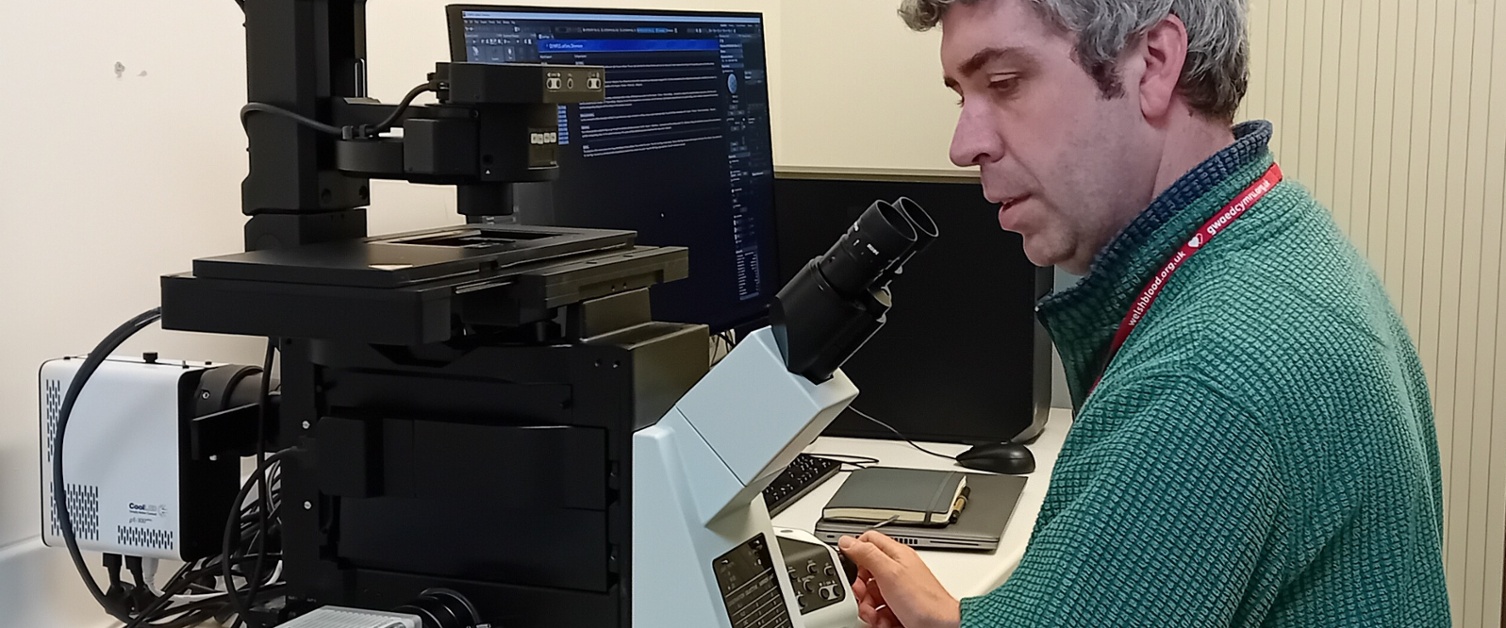Game changing investment in Welsh Blood Service

04 September 2024
The Welsh Blood Service is stepping into the world of microfluidic research, thanks to a successful application to Welsh Government’s SMART Capital Equipment Fund.
What is microfluidics and how will we use it?
Microfluidics looks at fluids on a micrometre scale, enabling us to examine cells as they flow through simulated blood vessels in a way similar to way cells behave in the human body.
Our Component Development and Research Laboratory currently tests samples in a test tube to understand how the collection and storage of blood cells affects their function. With microfluidics we can now look at the way blood cells function after collection in an environment that is closer to the experience in the body. More accurate results will help us to better preserve the quality of blood products resulting in a longer shelf-life, which will in turn benefit patients by ensuring more blood products are available when needed.
Using the funding from the SMART Capital Equipment Fund we now have the Olympus 1X83 Automated microscope and software up and running, with the microfluidics components currently in set up.
Our first project
Of particular interest to the Welsh Blood Service is whether platelets stored at refrigerated temperatures retain their ability to stop bleeding. We are currently working alongside civilian and military colleagues to consider this question and we will be able to use microfluidics to look at normal, room temperature stored platelets and the cold stored platelets to assess and compare their clotting potential.
Future projects
Red cells are the part of the blood that deliver oxygen from the lungs to the tissue, traveling from the arteries of the body into narrow capillaries which are only around 1/100 of a millimetre across.
In order to squeeze through the capillaries, red cells need to be able to deform, flexing from their normal disc shape. Damaged or aged cells tend to be too rigid to flex and can block the tiny vessels.
Using microfluidics we can make the channels of the chips as small as a capillary and mimic the flow of red cells in the body. This will allow us to assess the effect of storage conditions on the red cells’ ability to deform, informing potential improvements in the manufacture and storage of red cell components. This is particularly relevant in conditions such as sepsis where the microcirculation is already compromised and the ability of transfused red cells to deform may be critical to maintain tissue oxygenation.
The microscopy specialist
Edward Leech-Sayers (pictured above) is a microscopy specialist and joined the Component Development Research Laboratory at WBS from Cardiff University in November 2023.
His extensive experience has been very valuable in setting up the new equipment and providing training to other research staff.
“The new microscope and microfluidics equipment is an exciting advancement in technology for the Welsh Blood Service. It will allow us to look more closely at how blood components behave as they flow around the human body.
“We will be able to feed new, high-quality data into our research projects and it opens up a world of possibilities for new research at the blood service. “It is a very flexible microscope which can be used without the microfluidics kit, and it importantly has a camera and the ability to record, extract and quantify data, and share what we are seeing.
“I am excited to share my love of microscopy with the team at the Welsh Blood Service,” said Edd.
The funding
A grant application was a team effort involving the expertise of the Component Development Research Laboratory, WBS RD&I Services and Velindre University NHS Trust’s Innovation team.
Welsh Government awarded over £112,000 from the SMART Capital Equipment Fund to establish microfluidic technology at the blood service.
Chloe George, Head of Component Development at the Welsh Blood Service said:
“This new facility will give us an improved understanding of the functional characteristics of our blood components which could lead to improvements in manufacture and storage, increased efficiency in the blood supply chain and benefits to the people of Wales.
“I believe we will be able to expand as a research organisation, improving the skills and expertise of our scientists and researchers. As we explore novel avenues in transfusion science, we will contribute valuable insights and advancements to the wider international community.
“I would like to thank the Welsh Government for their support by investing in the research capability of the Welsh Blood Service.”





